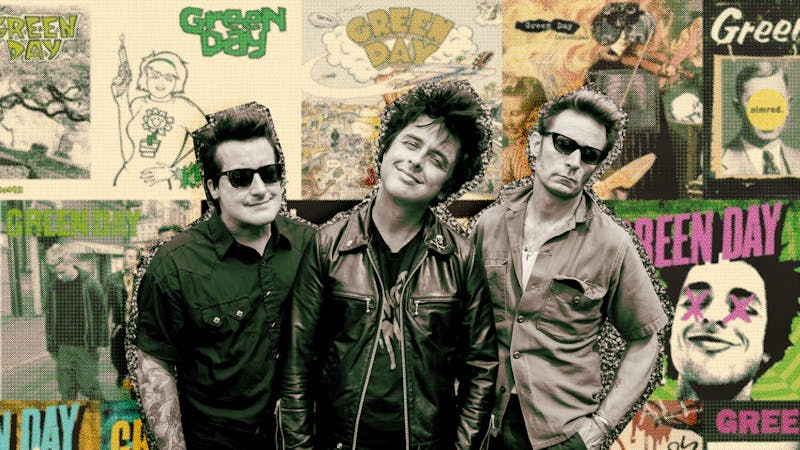The origin of film lies in its accessibility for the masses.
From 1905 to 1908, theaters were dubbed "nickelodeons" due to their cheap 5 cent admission price. For working class individuals who couldn’t afford the expensive entertainment of live theater, films provided a way for the masses to appreciate art and entertainment. Gradually, as films became more and more popular across the social classes, distinctions in film emerged to establish its validity as an art form: Arthouse, Oscar bait, indie, blockbusters, knockoffs.
Now, record–breaking box office sales, a plethora of multi–billion dollar franchises and expansive fandom communities across all social media platforms prove just how important films are to the economy and society.
The Marvel Cinematic Universe has been the poster child in developing a profitable franchise. Its success, totaling $29 billion across 33 films, has spawned many elaborate multiverse franchises. According to the Harvard Business Review, Marvel’s success in 2019 was due to its ability to constantly challenge the conventions of the superhero genre, hiring a diverse array of talent and specialties to contribute to its films. Additionally, their key storytelling techniques of Easter eggs and foreshadowing kept audiences constantly engaged for the next film.
The numerous Marvel fan communities that meticulously analyze their films, discuss theories and produce fan works are in lockstep with Marvel’s artistic achievement. Expert choreography of fight scenes compounded with CGI accent the already tense storyline. Key Easter eggs show forethought and planning across several writers. Franchise, in this sense, doesn’t equate to a lack in artistic merits.
However, Disney franchises have also dominated prime theater showing times, and in effect unfairly eliminated any space for other films to showcase their craftsmanship.
Quentin Tarantino, established director of Pulp Fiction, Inglourious Basterds, Kill Bill, has expressed frustration over Disney utilizing its power to run Star Wars in cinemas longer than they planned, resulting in his own film being shut out of the theater. Whenever Marvel films are released, they easily fill all the prime time slots in a theater, resulting in smaller movies gaining very limited visibility.
Yet as of 2024, the MCU is a shell of what it used to be. Recent criticisms focus on over–saturation with constant movie and TV show releases, stale and repetitive plotlines, and poor effects due to the extreme time constraints and working conditions imposed on the VFX artists have muddied the franchise’s reputation.
Is the continued profitability of films inexplicably tied to a continued decrease in quality?
No. It isn’t impossible for films made for something beyond an established way to bring in revenue to shine in this economy and movie climate. Audiences have the capacity to recognize and support the film as an art form.
Last year, A24 productions The Whale and Everything Everywhere All at Once earned eighteen Oscar awards, six of them belonging to the top categories of Best Picture and Best Director.
In a highly bureaucratic industry, where successes are modeled after past establishments of billion dollar franchises, A24 succeeds with a smaller budget by taking risks with their talent. The executives believe in their artists' ability to produce quality by allowing them creative freedom. As a result, they have produced films that truly resonate with the audience and at the same time securing financing for future projects, such is the case with Everything Everywhere All at Once’s success. Its $143.4 million in box office revenue could finance multiple A24 films with budgets of $15–20 million.
This financial model, intertwined with A24's brand ethos, has allowed for its talent to succeed both creatively and financially even beyond the studio. Indie director Greta Gerwig directed Barbie, the biggest film of 2023 (grossed $1.446 billion at the box office). Gerwig made her initial debut as a solo writer and director with Lady Bird, a film distributed by A24. It obtained the Best Picture Oscar nomination on a $10 million budget. Through her successes with Lady Bird and Little Women, she has gained recognition for producing poignant films on the female experience. As a result, she was given the opportunity to produce the commercial and critical hit Barbie.
In spite of the film’s larger budget, and the necessity to balance more interests such as profit, merchandising and audience expectations of Gerwig as an artist, Barbie still succeeded across multiple fronts with little sacrifice. It was the highest grossing movie in the domestic box office of 2023. Toy sales shot up 25% in the two months following the film’s release compared to the same time period of the previous year. Additionally, women around the world giddily embraced femininity, unabashedly dressing in hot pink when going to the theaters. Many more cried at America Ferrera’s monologue acknowledging their unspoken struggles.
The successes of Gerwig, Everything Everywhere All at Once, and more prove that artistic films aren’t lost on audiences. Films that resonate with audiences have the potential to be successful. Instead of blaming audiences' illiteracy, we should pay closer attention to large corporation’s power abuse in garnering unfair advantages and preventing consumer access to a diverse array of films.
Ultimately, it is all the more important for studios to consistently support creatives who are taking storytelling risks that capture the human experience. After all, it is film’s root in democratic entertainment across a wide set of audiences that makes it succeed as a medium in the first place.






